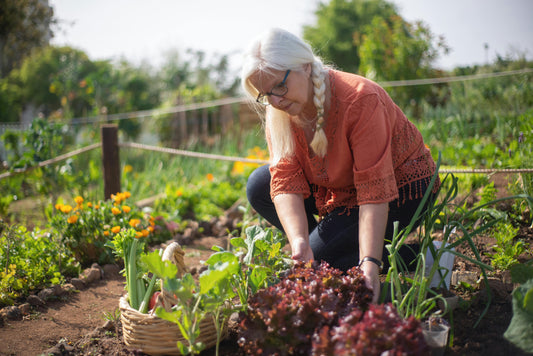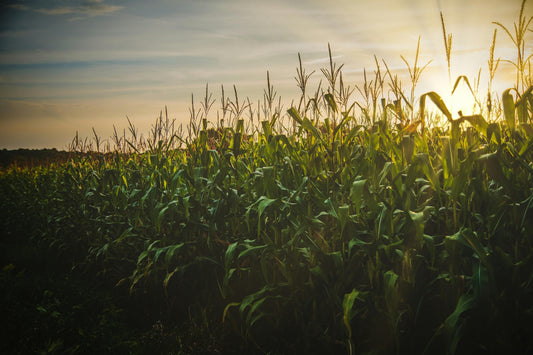Dallas, Texas sits at the intersection of three major ecological regions - the Blackland Prairie, Cross Timbers, and Trinity River floodplain - creating diverse soil types that shape the city's agriculture, urban development, and natural ecosystems. Understanding these soil variations is crucial for successful farming, landscaping, construction, and environmental conservation in North Texas.
Dallas area soils include fertile Mollisols and clay-rich Vertisols of the Blackland Prairie, well-drained Alfisols of the Cross Timbers, alluvial Entisols along waterways, and extensively modified urban soils throughout developed areas.
Dallas Soil Types: Complete Guide to North Texas Soils and Management
Dallas County encompasses over 900 square miles of diverse soil landscapes that reflect the complex geological history of North Central Texas. The region's soils have developed over thousands of years through weathering of underlying bedrock, deposition of river sediments, and accumulation of organic matter from native prairie and woodland vegetation. Today, these soils support a metropolitan area of over 2.6 million people while continuing to provide essential agricultural production and ecosystem services.
The USDA Natural Resources Conservation Service has identified more than 50 distinct soil series within Dallas County, each with unique characteristics that influence land use capabilities, agricultural productivity, and urban development considerations. Understanding these soil types and their management requirements is essential for farmers, urban planners, landscapers, and residents seeking to optimize land use while protecting soil resources for future generations.
Geological Foundation and Ecological Regions
Dallas County's soil diversity reflects its position at the convergence of three major ecological regions, each with distinct geological characteristics and soil-forming processes that have operated over millennia.
Blackland Prairie Region
The Blackland Prairie covers the eastern and central portions of Dallas County, characterized by dark, fertile soils developed from weathering of underlying chalk and marl formations. According to the Texas Parks and Wildlife Department, this region historically supported vast grasslands dominated by tall and mid-height grasses that contributed significant organic matter to soil development.
The USDA Natural Resources Conservation Service documents that Blackland Prairie soils typically have high clay content, excellent natural fertility, and deep, dark-colored surface layers rich in organic matter. These characteristics make them among Texas's most valuable agricultural soils, though their clay content also creates management challenges related to drainage and tillage timing.
Cross Timbers Region
The Cross Timbers region extends across western Dallas County, featuring soils developed from sandstone and shale parent materials. The Texas Forest Service describes this region as historically supporting oak-hickory woodlands interspersed with prairie openings, creating soils with different characteristics than the adjacent Blackland Prairie.
These soils generally have sandier textures, better drainage, and moderate fertility compared to Blackland Prairie soils. The University of Texas at Arlington documents that Cross Timbers soils often have lighter colors and less organic matter accumulation due to the historical woodland vegetation and different climate patterns.
Trinity River Floodplain
The Trinity River and its tributaries have created alluvial soils throughout their floodplains in Dallas County. The U.S. Geological Survey explains that these soils form through repeated flooding cycles that deposit sediments carried from upstream watersheds, creating young soils with variable characteristics depending on flooding frequency and sediment sources.
Floodplain soils typically have high fertility due to nutrient-rich sediment deposits but face challenges related to flooding risks and variable drainage conditions. The Texas Water Development Board notes that these areas provide important flood control and water filtration functions while supporting riparian vegetation communities.
Vertisols: Clay-Rich Blackland Prairie Soils
Vertisols represent Dallas County's most distinctive and challenging soil type, characterized by very high clay content and pronounced shrink-swell behavior that significantly affects both agricultural and urban land uses.
Formation and Distribution
According to the USDA Natural Resources Conservation Service, Vertisols develop in areas with high clay content parent materials and climates with distinct wet and dry seasons. In Dallas County, these soils formed primarily from weathering of chalk and marl formations underlying the Blackland Prairie region.
The defining characteristic of Vertisols is their high content of expansive clay minerals, particularly montmorillonite, which causes dramatic volume changes with moisture fluctuations. The Texas A&M AgriLife Extension Service reports that these soils can expand up to 10% or more when wet and contract significantly during dry periods, creating distinctive surface cracking patterns and internal soil movement.
Agricultural Properties and Management
Despite their management challenges, Vertisols are among Texas's most fertile soils when properly managed. The USDA Natural Resources Conservation Service documents that these soils typically have excellent nutrient-holding capacity, high organic matter content, and pH levels generally suitable for most crops.
Successful crop production on Vertisols requires careful attention to tillage timing, drainage management, and traffic control to prevent severe compaction during wet conditions. The Texas A&M AgriLife Extension Service recommends controlled traffic farming systems, cover cropping, and organic matter additions to improve soil structure and reduce compaction risks.
Urban Development Challenges
Vertisols present significant challenges for urban development due to their shrink-swell characteristics. The Texas Department of Transportation documents extensive infrastructure damage caused by expansive clay soils, including foundation cracking, road heaving, and utility line damage.
Construction on Vertisols typically requires specialized foundation designs, proper drainage systems, and ongoing maintenance to address soil movement. The American Society of Civil Engineers provides guidelines for construction techniques that can minimize damage from expansive soils, including pier and beam foundations, flexible utility connections, and moisture management systems.
Mollisols: Fertile Prairie Soils
Mollisols represent some of Dallas County's most productive agricultural soils, characterized by thick, dark surface layers rich in organic matter developed under native prairie vegetation.
Prairie Soil Development
The USDA Natural Resources Conservation Service explains that Mollisols develop under grassland vegetation in climates with adequate moisture for plant growth but dry periods that prevent excessive leaching. The deep root systems of prairie grasses contribute large amounts of organic matter throughout the soil profile, creating the characteristic dark colors and high fertility.
In Dallas County, Mollisols typically occur in areas that were historically tallgrass and mixed-grass prairie, particularly in transitional zones between the Blackland Prairie and Cross Timbers regions. The Texas Parks and Wildlife Department documents that these areas supported diverse grass communities that built soil organic matter over thousands of years.
Agricultural Productivity
Mollisols excel in agricultural production due to their combination of high organic matter, excellent nutrient availability, and generally favorable physical properties. The Texas A&M AgriLife Extension Service reports that these soils typically have good water-holding capacity, moderate drainage, and pH levels suitable for most crops.
Common crops grown on Dallas County Mollisols include corn, grain sorghum, wheat, cotton, and soybeans. These soils also provide excellent grazing land for livestock operations when managed with appropriate stocking rates and rotational systems.
Conservation Considerations
The USDA Natural Resources Conservation Service emphasizes that Mollisols require careful management to maintain their productivity and prevent degradation. Key conservation practices include maintaining ground cover, managing tillage intensity, and implementing crop rotation systems that build soil organic matter.
Erosion control is particularly important on sloping Mollisol areas, where valuable topsoil can be lost during intense rainfall events. Conservation tillage, terracing, and grass waterways help protect these valuable soil resources while maintaining agricultural productivity.
Alfisols: Well-Drained Cross Timbers Soils
Alfisols occur primarily in the Cross Timbers region of western Dallas County, where they developed under oak-hickory woodlands on sandstone and shale parent materials.
Forest Soil Characteristics
According to the USDA Natural Resources Conservation Service, Alfisols develop under forest vegetation in climates with adequate moisture for tree growth and moderate leaching that moves clay particles from surface layers to deeper horizons. This process creates distinctive soil profiles with lighter-colored surface layers over clay-enriched subsoils.
Dallas County Alfisols typically have sandy loam to loam surface textures with clay loam to clay subsoils. The Texas Forest Service reports that these soils generally have good drainage, moderate fertility, and slightly acidic pH levels that reflect the influence of forest litter decomposition.
Land Use Applications
Alfisols in Dallas County support diverse land uses including agriculture, forestry, and urban development. The Texas A&M AgriLife Extension Service notes that these soils are well-suited for wheat, oats, hay production, and livestock grazing when properly managed.
The generally good drainage and moderate slope tolerance of Alfisols make them attractive for residential and commercial development. However, some areas may have limitations related to depth to bedrock or seasonal wetness that affect construction suitability.
Management Practices
Successful management of Alfisols typically involves maintaining organic matter levels, managing soil acidity, and preventing erosion on sloping areas. The University of Texas at Arlington recommends cover cropping, reduced tillage, and organic matter additions to optimize soil health and productivity.
Woodland areas on Alfisols benefit from sustainable forestry practices that maintain tree cover, protect soil from erosion, and preserve wildlife habitat values while providing timber and recreation opportunities.
Inceptisols: Young Upland Soils
Inceptisols occur in upland areas throughout Dallas County where soil development has been limited by factors such as slope position, erosion, or relatively young parent materials.
Soil Development Limitations
The USDA Natural Resources Conservation Service explains that Inceptisols are weakly developed soils that show some evidence of soil formation but lack the distinct horizons characteristic of more mature soil types. In Dallas County, these soils often occur on steep slopes, eroded areas, or sites with resistant parent materials that slow soil development.
These soils typically have limited profile development, variable textures, and moderate to low fertility compared to more developed soil types. They often occur in complex patterns with other soil types, creating diverse landscapes that require site-specific management approaches.
Ecological Functions
Despite their agricultural limitations, Inceptisols provide important ecological functions including wildlife habitat, erosion control, and water infiltration. The Texas Parks and Wildlife Department documents that upland areas with Inceptisols often support native plant communities that provide valuable habitat for birds, mammals, and insects.
These soils also play important roles in watershed protection by providing vegetated cover that slows runoff and reduces erosion on steep slopes and upland areas.
Management Considerations
Management of Inceptisols typically focuses on maintaining vegetative cover, preventing erosion, and using land uses appropriate to their capabilities. The USDA Natural Resources Conservation Service recommends careful site selection for development, erosion control measures for disturbed areas, and native vegetation establishment for long-term stability.
Agricultural use of Inceptisols is often limited to grazing or hay production, with careful attention to stocking rates and grazing timing to prevent overuse and erosion.
Entisols: Alluvial Floodplain Soils
Entisols occur along the Trinity River and its tributaries in Dallas County, representing young soils formed by recent sediment deposition in floodplain environments.
Floodplain Soil Formation
According to the U.S. Geological Survey, Entisols in floodplain settings form through repeated flooding cycles that deposit new sediment layers before significant soil development can occur. These soils typically show little horizon development and have variable characteristics depending on the source and timing of sediment deposits.
Dallas County Entisols often have sandy to loamy textures with variable organic matter content and fertility levels. The Texas Water Development Board notes that these soils may be seasonally wet due to high water tables or frequent flooding, creating hydric conditions that support specialized plant communities.
Agricultural Potential and Limitations
Entisols can have excellent agricultural potential when properly drained and managed, often supporting high-value crops such as vegetables and fruits. The Texas A&M AgriLife Extension Service reports that the regular addition of nutrient-rich sediments during flooding can create highly fertile growing conditions.
However, these soils also face significant limitations including flooding risks, variable drainage, and potential contamination from upstream sources. Successful agricultural use requires flood protection, drainage management, and careful crop selection based on flooding frequency and duration.
Environmental Services
Entisols provide critical environmental services including flood control, water quality improvement, and wildlife habitat. The Texas Commission on Environmental Quality documents that floodplain soils help reduce flood peaks by storing excess water and filter pollutants from surface runoff.
These areas also support riparian vegetation communities that provide important habitat corridors for wildlife movement and support diverse plant and animal communities adapted to periodic flooding.
Urban Soils: Human-Modified Landscapes
Urban soils represent an increasingly important category in Dallas County, where decades of development have significantly altered natural soil conditions through construction, filling, and contamination.
Urban Soil Formation Processes
The USDA Natural Resources Conservation Service defines urban soils as those significantly altered by human activities, including grading, filling, compaction, and mixing with foreign materials. In Dallas, these soils often contain construction debris, imported fill, and various contaminants accumulated over decades of urban development.
Urban soils typically have altered physical, chemical, and biological properties compared to natural soils. Common changes include increased bulk density from compaction, modified drainage patterns, altered pH levels, and reduced biological activity due to contamination or disturbance.
Contamination and Quality Issues
The Texas Commission on Environmental Quality has documented various contamination issues in Dallas urban soils, including petroleum products from gas stations, heavy metals from industrial activities, and legacy pesticides from former agricultural areas.
Lead contamination is particularly widespread in older urban areas where lead-based paints were commonly used before 1978. The Environmental Protection Agency recommends soil testing for lead before establishing gardens or play areas, especially near older buildings or busy roads.
Urban Agriculture and Green Infrastructure
Despite contamination challenges, urban soils in Dallas support growing urban agriculture and green infrastructure initiatives. The City of Dallas promotes community gardens, green roofs, and urban farming as strategies for improving food access and environmental quality.
Successful urban agriculture often requires soil replacement, raised bed construction, or extensive amendment to address contamination and compaction issues. The Dallas County Master Gardener program provides education and support for urban gardening initiatives throughout the metropolitan area.
Soil Testing and Assessment
Effective soil management in Dallas County begins with comprehensive testing to understand site-specific conditions and identify appropriate management strategies.
Basic Soil Analysis
The Texas A&M AgriLife Extension Service provides soil testing services and recommendations for Dallas County residents and farmers. Basic soil tests include pH, nutrient content (nitrogen, phosphorus, potassium), organic matter percentage, and soil texture analysis.
Soil pH is particularly important in Dallas County because many soils tend toward alkaline conditions that can limit nutrient availability for acid-loving plants. The Texas A&M AgriLife Extension Service recommends testing soil pH before establishing landscapes or agricultural crops to guide amendment decisions.
Specialized Testing Needs
Urban soils often require specialized testing beyond basic fertility analysis, including heavy metal screening, petroleum product detection, and assessment of physical properties such as compaction and drainage.
The Texas Commission on Environmental Quality provides guidelines for contamination assessment in urban areas, particularly for sites intended for food production or children's activities. Professional consultation may be necessary for interpreting results and developing remediation strategies.
Ongoing Monitoring
Regular soil monitoring helps track changes in soil conditions over time and evaluate the effectiveness of management practices. The USDA Natural Resources Conservation Service recommends annual testing for intensively managed agricultural soils and every 2-3 years for less intensive land uses.
Monitoring programs should track key indicators including organic matter trends, nutrient levels, pH changes, and any contamination concerns identified in initial testing.
Sustainable Management Practices
Sustainable soil management in Dallas County requires approaches tailored to specific soil types while addressing broader challenges including urban development pressure, climate variability, and water resource limitations.
Soil Health Building
Building and maintaining soil health represents a fundamental strategy across all soil types in Dallas County. The USDA Natural Resources Conservation Service emphasizes that healthy soils provide multiple benefits including improved water retention, enhanced nutrient cycling, better erosion resistance, and increased carbon storage.
Key soil health practices include maintaining living roots through cover crops and perennial vegetation, minimizing soil disturbance through reduced tillage, maximizing crop diversity through rotation systems, and integrating livestock grazing where appropriate.
Water Conservation and Management
Water-efficient soil management becomes increasingly important as North Texas faces periodic drought conditions and growing water demand. Soil-based water conservation strategies include improving soil organic matter to enhance water retention, using mulches to reduce evaporation, and selecting drought-tolerant plants adapted to local conditions.
The Texas Water Development Board promotes soil management practices that improve water infiltration and reduce runoff, helping to recharge local aquifers while reducing flood risks and water pollution.
Erosion Control and Conservation
Erosion control is particularly important in Dallas County due to the region's clay-rich soils, variable topography, and intense rainfall events. The USDA Natural Resources Conservation Service provides technical assistance for implementing conservation practices including terraces, grass waterways, contour farming, and vegetative buffers.
Urban areas require specialized erosion control approaches including construction site stabilization, green infrastructure installation, and post-development vegetation establishment to protect soil resources and water quality.
Climate Adaptation and Resilience
Climate change is affecting North Texas through altered precipitation patterns, increased temperature extremes, and more frequent severe weather events, requiring adaptive soil management strategies.
Temperature and Drought Stress
The Texas State Climatologist reports increasing average temperatures and more frequent extreme heat events that affect soil moisture patterns and plant stress levels. These changes increase the importance of soil management practices that improve water retention and provide temperature moderation.
Adaptive strategies include building soil organic matter to improve water-holding capacity, using mulches to moderate soil temperature, selecting heat and drought-tolerant crops and landscaping plants, and implementing efficient irrigation systems.
Extreme Weather Preparedness
More frequent intense rainfall events and severe storms require soil management approaches that enhance resilience and recovery capabilities. Building soil structure through organic matter additions and maintaining vegetative cover help soils withstand and recover from extreme weather impacts.
Protective measures include establishing diverse plant communities for stability, implementing drainage systems to handle intense rainfall, and maintaining soil cover to prevent erosion during severe weather events.
Carbon Sequestration Opportunities
Dallas County soils provide significant opportunities for carbon sequestration through improved management practices. The USDA Natural Resources Conservation Service reports that practices such as cover cropping, reduced tillage, and grassland restoration can increase soil carbon storage while improving soil health and productivity.
These practices provide multiple benefits including climate change mitigation, improved soil fertility, enhanced water retention, and reduced input costs for agricultural operations.
Local Resources and Support
Dallas County residents and land managers have access to numerous resources for soil testing, technical assistance, and educational programs supporting sustainable soil management.
Extension and Government Services
The Texas A&M AgriLife Extension Service maintains offices throughout Dallas County providing research-based information, soil testing services, and educational programs for agricultural producers, urban gardeners, and land managers.
The USDA Natural Resources Conservation Service provides technical and financial assistance for conservation practices on agricultural land, including soil health improvement programs and erosion control projects.
Professional Services
Certified soil testing laboratories throughout the Dallas area provide comprehensive analysis services with management recommendations tailored to local conditions. Professional soil consultants offer specialized expertise for complex soil management challenges.
The Dallas County Master Gardener program provides community education and support for home gardeners, including soil management guidance and hands-on training opportunities.
Research and Education
Local universities including the University of Texas at Dallas and Texas A&M University conduct ongoing research on soil management issues relevant to North Texas conditions. This research provides the foundation for updated management recommendations and conservation practices.
Educational programs offered by various organizations help residents understand soil resources and implement sustainable management practices in both agricultural and urban settings.
Conclusion
Dallas County's diverse soil landscape reflects the complex geological and ecological history of North Central Texas, creating both opportunities and challenges for agricultural production, urban development, and environmental conservation. From the fertile but challenging Vertisols of the Blackland Prairie to the well-drained Alfisols of the Cross Timbers, each soil type requires specific management approaches that balance productivity with long-term sustainability.
Successful soil stewardship in Dallas County requires understanding the unique characteristics of local soil types, implementing appropriate testing and assessment protocols, and applying management practices that build soil health while addressing current land use needs. As the region continues to grow and face environmental challenges including climate change and urbanization pressure, sustainable soil management becomes increasingly important for supporting thriving communities and healthy ecosystems.
The combination of scientific knowledge, practical experience, and community engagement provides the foundation for protecting and enhancing Dallas County's soil resources for future generations while supporting current agricultural production, urban development, and environmental quality goals.
Sources
- USDA Natural Resources Conservation Service. Soil Survey of Dallas County, Texas. https://www.nrcs.usda.gov/wps/portal/nrcs/surveylist/soils/survey/state/?stateId=TX
- Texas A&M AgriLife Extension Service. Soil Testing Laboratory. https://soiltesting.tamu.edu/
- Texas Parks and Wildlife Department. Blackland Prairie Ecoregion. https://tpwd.texas.gov/education/bioblitz/ecoregions/blackland-prairie
- U.S. Geological Survey. Water Resources of Texas. https://www.usgs.gov/centers/oklahoma-texas-water-science-center
- Texas Commission on Environmental Quality. Soil and Groundwater Remediation. https://www.tceq.texas.gov/remediation
- Environmental Protection Agency. Lead in Paint, Dust, and Soil. https://www.epa.gov/lead
- Texas Forest Service. Forest Resources. https://tfsweb.tamu.edu/
- Texas Water Development Board. Groundwater Resources. https://www.twdb.texas.gov/
- American Society of Civil Engineers. Foundation Engineering Guidelines. https://www.asce.org/
- University of Texas at Arlington. Environmental Science Research. https://www.uta.edu/academics/schools-colleges/science/departments/earth-environmental












